A special guest checked us out this week. Taiwanese movie godfather, Hou Hsiao-hsien (
After sending the sketchy information to our film expert for analysis, Pop Stop concluded that the film could be Hou's long-awaited project The Best of Our Time (

PHOTO: TAIPEI TIMES
Now back to the bitchy side of show biz. Nationally acclaimed as ``the most beautiful woman in Taiwan,'' age-resistant Stephanie Hsiao (
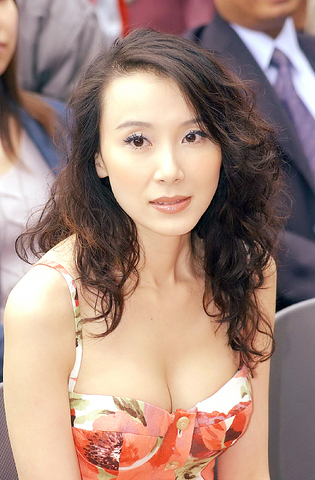
PHOTO: TAIPEI TIMES
After 15 years in the entertainment industry, Hsiao is now tapping into the Mando-pop music scene and introduced her first album earlier this month. Since then, the musical freshwoman has been running around, popping up at as many events as she can in the hope of boosting her not-so-promising record. Judging from the reviews and sales so far, the star still has a long way to go.
But another foxy lady is on the rise. Despite a previously plump figure (plump by the industry's standards), Little S (
Not only is she the spokesperson for a body-sculpting cosmetic brand, but Little S also got a big fat red envelope from a Taiwanese diet-drink manufacturer for endorsing its products.
Local media put the super-model Lin Chih-ling (
When asked whether she has the confidence to win back the title of ad queen by the end of the year, the sweet, well-cultivated lady Lin gave her typical response, ``I always put 100 percent effort in each and every job. Titles to me are not important at all.''
While Little S will use her fat check to take her whole family abroad for a luxurious vacation, Singaporean pop singer Stefanie Sun (
(
During this time of happiness when everyone is preparing for the New Year break, show biz is still able to generate miserable break-up news. Chang Chen (張震) -- the actor who has frequently starred in works by Ang Lee (李安) and Wong Kar Wai (王家衛) -- has broken up with his singer girlfriend Lu Jia-Hsin (路嘉欣) after six years of their low-profile relationship. Chang chose to remain silent after the news broke, but Lu made a brief and ambiguous comment: ``Right now, I feel everything is illusion.''
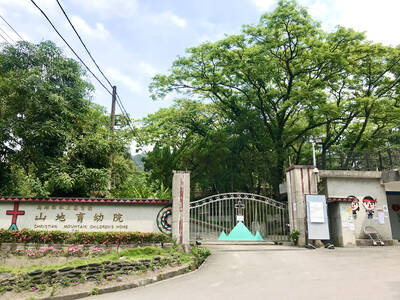
May 18 to May 24 Pastor Yang Hsu’s (楊煦) congregation was shocked upon seeing the land he chose to build his orphanage. It was surrounded by mountains on three sides, and the only way to access it was to cross a river by foot. The soil was poor due to runoff, and large rocks strewn across the plot prevented much from growing. In addition, there was no running water or electricity. But it was all Yang could afford. He and his Indigenous Atayal wife Lin Feng-ying (林鳳英) had already been caring for 24 orphans in their home, and they were in
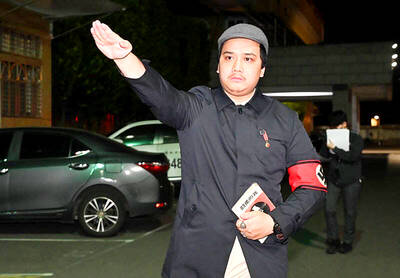
On May 2, Chinese Nationalist Party (KMT) Chairman Eric Chu (朱立倫), at a meeting in support of Taipei city councilors at party headquarters, compared President William Lai (賴清德) to Hitler. Chu claimed that unlike any other democracy worldwide in history, no other leader was rooting out opposing parties like Lai and the Democratic Progressive Party (DPP). That his statements are wildly inaccurate was not the point. It was a rallying cry, not a history lesson. This was intentional to provoke the international diplomatic community into a response, which was promptly provided. Both the German and Israeli offices issued statements on Facebook
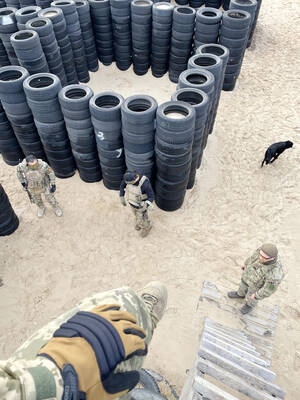
Even by the standards of Ukraine’s International Legion, which comprises volunteers from over 55 countries, Han has an unusual backstory. Born in Taichung, he grew up in Costa Rica — then one of Taiwan’s diplomatic allies — where a relative worked for the embassy. After attending an American international high school in San Jose, Costa Rica’s capital, Han — who prefers to use only his given name for OPSEC (operations security) reasons — moved to the US in his teens. He attended Penn State University before returning to Taiwan to work in the semiconductor industry in Kaohsiung, where he
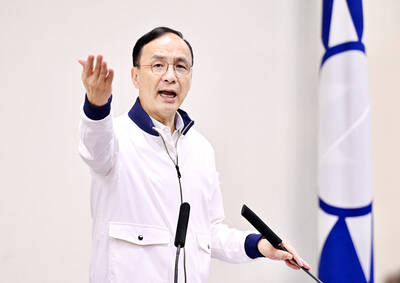
Australia’s ABC last week published a piece on the recall campaign. The article emphasized the divisions in Taiwanese society and blamed the recall for worsening them. It quotes a supporter of the Taiwan People’s Party (TPP) as saying “I’m 43 years old, born and raised here, and I’ve never seen the country this divided in my entire life.” Apparently, as an adult, she slept through the post-election violence in 2000 and 2004 by the Chinese Nationalist Party (KMT), the veiled coup threats by the military when Chen Shui-bian (陳水扁) became president, the 2006 Red Shirt protests against him ginned up by